What is the problem with this plant?
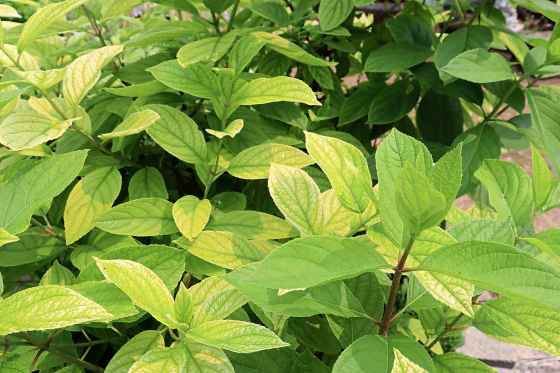
What is the problem with this plant? (Colleen Zacharias)
There is more to this than meets the eye. You will find the answer at the bottom of this newsletter.
Double bloodroot
This spring the brief but beautiful appearance of Double Bloodroot Sanguinaria captivated all those who are fortunate to grow it in their gardens.
Double Bloodroot Sanguinaria canadensis is a spring-flowering herbaceous woodland perennial native to eastern parts of Canada, including southern Manitoba.
Sanguinaria (pronounced san-gwin-AIR-e-a) is from the Latin word sanguis, meaning blood, or the sap being a red colour. Bloodroot has rhizomes that contain red sap.
The double bloodroot is considered a rare form. It produces pure white flowers and deeply scalloped leaves.
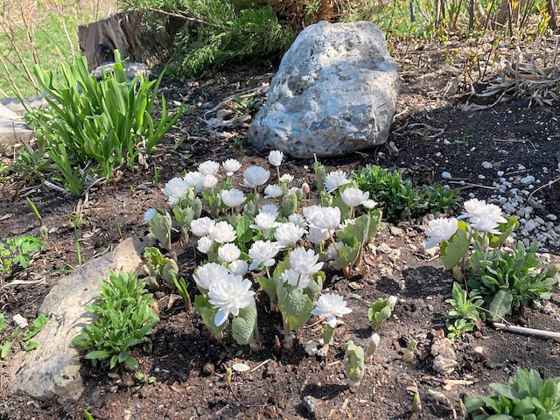
Double Bloodroot Sanguinaria canadensis is a spring-flowering herbaceous woodland perennial native to southern Manitoba. (Deb Fast)
A low-growing plant, double bloodroot likes moist shade. Or so thought Deb Fast, a St. James gardener. With the recent loss of mature elm trees along her riverbank, her backyard is now in full sun. This spring, her double bloodroot bloomed prolifically.
“The bloom season is relatively short, “ says Fast. In May, double bloodroot bloomed during record heat.
“Even though the blooms were short-lived, they give me so much pleasure,” says Fast. “Together with my marsh marigolds and daffodils, these early flowers make my heart sing.”
Fast purchased her double bloodroot at the 2014 Mother’s Day Plant Sale from Hugh Skinner, who was a vendor at the sale.
Will one fertilizer suffice?
When Shea Doherty, manager of Our Farm Greenhouse, said to a gathering of gardeners earlier this spring that they should be using multiple types of fertilizers on their plants, there was an immediate stir in the audience and several raised their hands.
The occasion was the Manitoba Horticultural Association’s first annual Garden Party, held in Portage la Prairie on April 27. “Would you want to eat lasagna every day? Plants get tired of the same old food every day, too,” said Doherty.
On a visit to Our Farm Greenhouse, I asked Doherty which types of fertilizer he recommends. Evolve Organics is at the top of his list because it doesn’t contain any chemicals.
“It’s manufactured locally, too,” he added.
Doherty also recommends another organic fertilizer, Nature’s Source Plant Food, saying it is safer for plants, people, and the environment. Nature’s Source Plant Food is formulated to be low in salts. The easy-to-use liquid plant food is made from oilseed extract and includes amino acids for overall plant health.
Sheldon Gesell, owner of Dirt ‘n Grow, manufacturers of Evolve Organic Fertilizer, says that he always recommends using two fertilizer products.
“If you are already using what would be called a complete fertilizer (one that provides the macro nutrients nitrogen, phosphate, and potassium and some micronutrients), I would recommend my Evolve Rage Plus 0-0-6 product on top of that.
“Even if you are already using my Evolve slow-release Tomato and Vegetable 7-3-4 with 10 percent calcium and 6 percent sulphur, I always recommend using the Evolve Rage Plus 0-0-6 as well.”
Here’s why: “Evolve Rage Plus is a freshwater seaweed with digesting enzymes and provides all the trace minerals a plant requires. It is super concentrated at 1-3 ml per liter of water and increases cell division 100 times faster.
“Topping up a complete fertilizer product with Evolve Rage Plus 0-0-6 will give amazing results,” says Gesell.
Clematis on old wood?
Maurice Tryhuk has grown clematis on the south side of his house for more than 60 years. Last year, he planted Jackmanii Superba, which flowers only on new wood and belongs to pruning group 3. It can be cut to the ground in fall or late winter.
Tryhuk pruned it back last fall to about 30 cm from the ground. He was surprised this spring to discover new growth on the old wood.
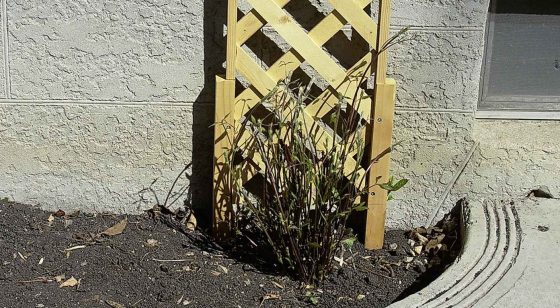
New growth on old wood of a Clematis Jackmanii. (Maurice Tryhuk)
I reached out to Clearview Horticultural Products, a wholesale plant nursery in Langley, B.C., which supplies a wide range of clematis vines to garden centres across Canada and sent the photo that Tryhuk provided.
I was advised that the clematis will bloom on the new growth and that the occurrence of new growth on old wood is not abnormal.
I also reached out to Lyndon Penner, head gardener at Riding Mountain National Park. He provided the following explanation as to why a Group 3 clematis would unexpectedly produce new growth on old wood.
“It is not at all unusual to find clematis cultivars such as Jackmannii to be sprouting on old wood, it all depends on the winter we have had.
“Very often, clematis dies to the ground in our climate and resprouts from the roots. But not always. If we get a good deep snow cover, particularly if that snow comes early in the winter before it gets too cold, the snow creates a blanket that can protect clematis from extremes in temperature. Then you get sprouting on old wood. It happens. Not every year, but it happens sometimes.
“If you were in Victoria or the U.K., where winters are very mild, the pruning instructions for clematis are very different than on the Canadian prairies. What often happens there is ‘bare legs syndrome.’
“Clematis, depending on the cultivar, might climb 6 to 10 feet tall, but if left unpruned, the flowers will only be at the very top of the plant — on the new growth. Meanwhile, the growth down below becomes twiggy and very woody, hence ‘bare legs.’
“My guess is that your reader may have piled snow there this winter. Or maybe the snow got good and deep before we got too violently cold. Or maybe there was a camper parked nearby that protected it from prevailing winds or maybe it’s up against a heated building and it was sheltered from the worst of winter.
“Whatever the case, this is not a terribly unusual occurrence. In fact, we have a clematis in one of our borders (at Riding Mountain National Park) that climbs delightfully into a lilac. This spring it is also sprouting about 8 inches or so up the stems instead of simply shooting forth at ground level.”
Hydrangea for container gardens
Question from reader Margaret Regier: We have moved from our acreage to a condo and would like to plant a hydrangea in a planter that faces north. Which hydrangea variety would you recommend?
The Kanmara Hydrangea is an ideal choice for a container garden in a north-facing location.
Kanmara is a Hydrangea macrophylla (big leaf hydrangea). It produces large mophead blooms in pink or white. It is not hardy to our Zone 3b climate, but is well-suited for growing in container gardens and will put on a beautiful show from now through fall.
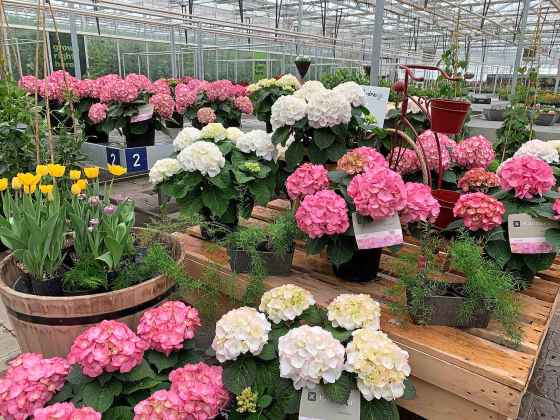
Pink and white Kanmara Hydrangeas (Colleen Zacharias)
Kanmara is not tolerant of afternoon sunlight. Morning sun is ideal, although it should be protected from the hot sun after 11:30 a.m.
The large blooms, whether they start pink or white, eventually turn a lovely shade of green by August.
Depending on the size of your container, Kanmara can be combined with other shade-loving annuals such as begonias and trailing ivy.
You may also want to consider other shade-tolerant macrophylla-type hydrangeas such as Eclipse or Game Changer.
Like all hydrangeas, Kanmara benefits from regular watering. Use a slow-release fertilizer at the time of planting and feed with a water-soluble fertilizer starting in mid-summer.

Green flowered Kanmara Hydrangea, shown with Unbelievable Miss Montreal begonia and Marengo Ivy (Colleen Zacharias)
Botrytis of peony
Janet Wasney grows three peony plants in her front bed. “They’ve all been very healthy since we moved to our current home five years ago. But this year, my favourite (peony) has failed to sprout while the other two are vigorously growing.”
Typically, Wasney cut her peony stems to the ground.
“But last year, I left them standing and allowed leaves to cover them,” says Wasney.
This spring, Wasney discovered that one of the peonies had a white substance on its stems. She wondered if the substance indicated the presence of mould and whether this could be due to last spring’s abundant rainfall.
“Is there any hope for the peony? If the white substance is mould, do I need to treat the soil before planting something else? Should I have cut the stems down in the fall? Do peonies have a limited lifespan?”
To answer the last question first, peonies have a very long lifespan. They can easily live to 50 years or more.
Peonies are susceptible to botrytis blight, a fungal disease that can be exacerbated in wet weather. It is always recommended to cut peonies back in the fall and to discard the cut stems. The debris should be disposed of, but should not be added to the compost bin.
Myra Froc, president of the Prairie Peony Society, recommends the use of a fungicide that contains copper sulphate.
“It must be reapplied every few weeks,” she says. “Some (peony) cultivars are more susceptible to fungal diseases than others, while others seem to be more resistant.”
Froc says that with the discovery of botrytis, it will be important to be vigilant in the coming years for signs of the disease.
The spores of fungal disease can overwinter in the soil. I recommend Wasney also remove the top portion of the soil around her plant and replace it with clean soil.
Bagged wood chip mulch
Each spring, Jeannette and Stewart Astleford amend the soil in their garden beds with compost and apply a layer of wood chip mulch, which they purchase in bags.
“The wood chip mulch is in such large pieces and never seems to break down,” says Jeannette. “Should we be using it, or would you know where we could purchase shredded wood chips or something suitable for mulch?”
A hot and dry summer is in the forecast for southern Manitoba. Applying a layer of mulch to your garden beds will help to conserve moisture. In the event of rain – here’s hoping – mulch allows moisture to percolate slowly into the ground and reduces wasteful runoff.
Arborist wood chips are considered the gold standard. Consisting of ground-up branches from locally pruned trees, arborist wood chips absorb and retain moisture and readily decompose without adding any decontaminants to your soil.
I have ordered arborist wood chips many times and marveled at how quickly they decompose and feed the soil.
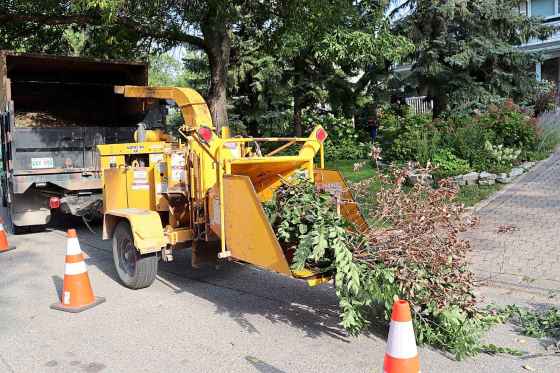
Arborist wood chips, considered the gold standard, consist of ground-up branches from locally pruned trees. (Colleen Zacharias)
A three-inch (8 cm) layer of arborist wood chips also suppresses weeds, however, anything less than a three-inch layer will be ineffective if weed suppression is your goal.
But what if you don’t like the look of arborist wood chips, which contain large and small pieces, and want the more uniform appearance of packaged bark mulch?
It’s important to know the source of packaged bark chips. For example, bark chips sold by Ecco Recycling, a Calgary-based company, are made from salvaged wood products such as wooden pallets. The bark chips are coloured with non-toxic, all-natural vegetable or mineral dye.
Some homeowners opt for a layer of rocks on shrub beds in the belief that it offers a tidy appearance. Rocks are an example of an inorganic mulch. Rocks slow the evaporation of moisture from the soil, but they do not slow the flow of water, nor do they absorb moisture.
Pity the root systems of plants in a bed of rocks on a scorching day because rocks radiate heat and raise the soil temperature. Another disadvantage is that rocks never decompose.
Aside from conserving moisture, shading the soil, and keeping the roots of plants cool, one of the primary goals of organic mulch (wood chips, shredded leaves, untreated grass clippings, straw) is that the material decomposes and feeds beneficial soil microbes and other soil microorganisms for healthier plants.
How much mulch?
Check out the mulch calculator available at Ron Paul Garden Centre’s website.
To calculate what you need, enter the length and width of the area you are covering as well as the depth of mulch that you require.
When applying wood chips, it is important not to place the mulch next to the trunks of trees and shrubs.
Alternatively, consider using leaf mold as a mulch. In the fall, gather leaves and shred them into small pieces. Many types of lawn mowers are equipped with a mulching attachment.
Store the shredded leaves in a pile for one year. Leaf mold, as well as compost, can be used as a mulch layer around plants in spring or fall.
What gardeners are buying
This spring, Glenda MacPhee, a Neepawa gardener, bought Veronicastrum virginicum, Culver’s Root, for her garden.
A native plant, Culver’s Root is a statuesque perennial with candelabra-like flower spikes. Suitable for the back of the border, Culver’s Root has an architectural, year-round presence in the garden with its unique flower arrangement that is beautiful even after the flowers have gone to seed.
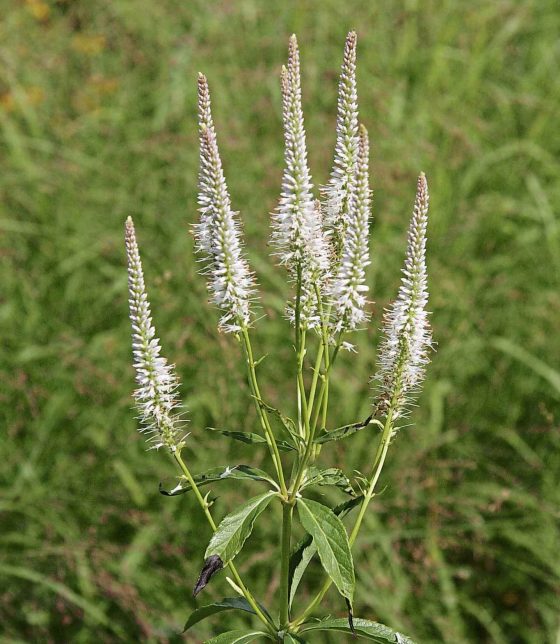
Veronicastrum Culver’s Root (Prairie Originals)
Veronicastrum is a pollinator magnet.
“A group of us placed a wholesale order from VanNoort this spring,” says MacPhee. “Veronicastrum was a hard sell at our plant sale, so I still have a few more left and will plant some in our public garden spaces in town so that people know how it blooms.”
In her home garden, MacPhee planted Veronicastrum in a drought-tolerant bed, which includes echinacea coneflower, daylilies, and overdam feather reed grass. The bed is edged with a short-growing iris.
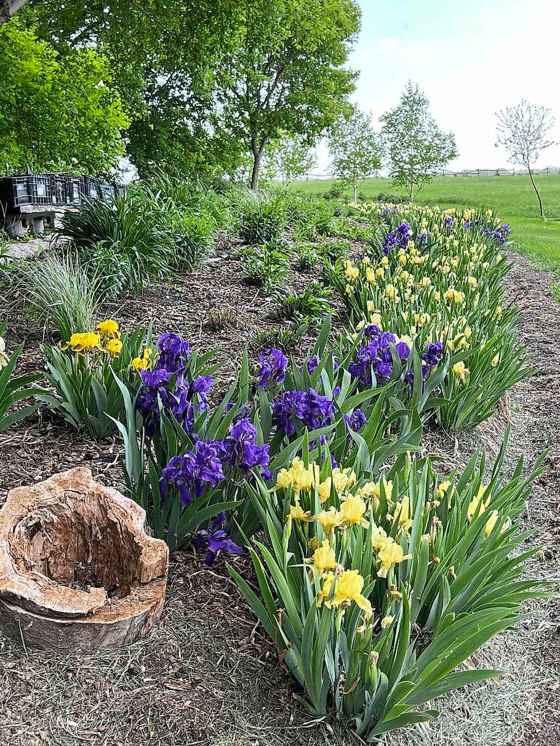
Glenda MacPhee’s Neepawa garden, where she is planting Veronicastrum. (Glenda MacPhee)
Pat Palanuk, who grew up in Pine Falls but today makes her home in the Crescentwood area of Winnipeg, is excited about the new Safari Dusk Jamesbrittenia, which she bought at Glenlea Greenhouses.
“It can handle drought, which is important for planting at the lake,” says Palanuk.
“I grew Safari Dawn last year and wow, did it perform,” says Palanuk. “It was nice and full, spilling over the sides of my pot with tons of blooms all summer long.”
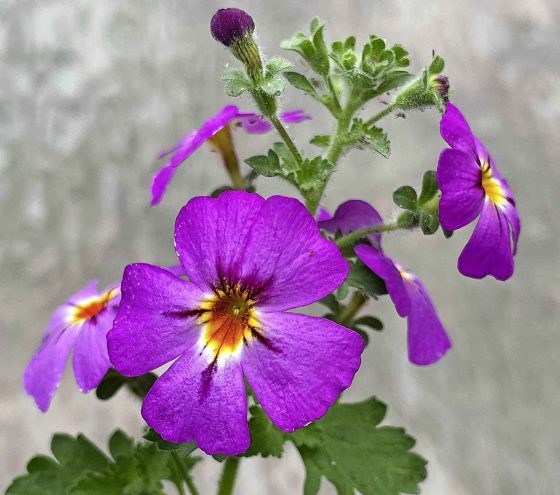
Safari Dusk Jamesbrittenia (Pat Palanuk)
An intriguing new series from Proven Winners, Safari Jamesbrittenia is disease resistant and heat tolerant and can stand up to heavy rain and strong winds. This new variety is also sun and shade-tolerant. Safari Dawn and Safari Dusk have won 24 awards in plant trials.
Interestingly, Safari Jamesbrittenia is a South African native phlox which we can grow here as an annual flower.
Surprising design tip
Thomas Hobbs is a man of many talents. The owner of Southlands Nursery in Vancouver, Hobbs is a florist, retailer, professional landscaper and designer, as well as an author. Born in Winnipeg, he spent his early childhood in the Norwood area.
Hobbs believes that achieving greater visual beauty in our gardens is the reason that we garden. There is no arguing with that.
In 2019, Hobbs gave a presentation in Winnipeg to a rapt, sold-out audience. I had the opportunity to interview him for my column. He shared advice on creating a focal point that has always stayed with me.
“There has to be something that makes you stop in your tracks,” he said, “and hopefully it’s not a wishing well. There has to be a breathtaking moment somewhere.”
Shocking beauty can be achieved by setting an empty container in a garden space against a backdrop of plants. Not just any container will do – select one that has classic style and a colour that will stand out.
“Sometimes a container looks best empty,” said Hobbs.
In this example, Hobbs has set a jar-shaped planter in a beautiful shade of blue in the centre of a border with a backdrop of spiky cardoon, which has grey-green leaves and thistle-like flowers and plants with blue-purple flowers.
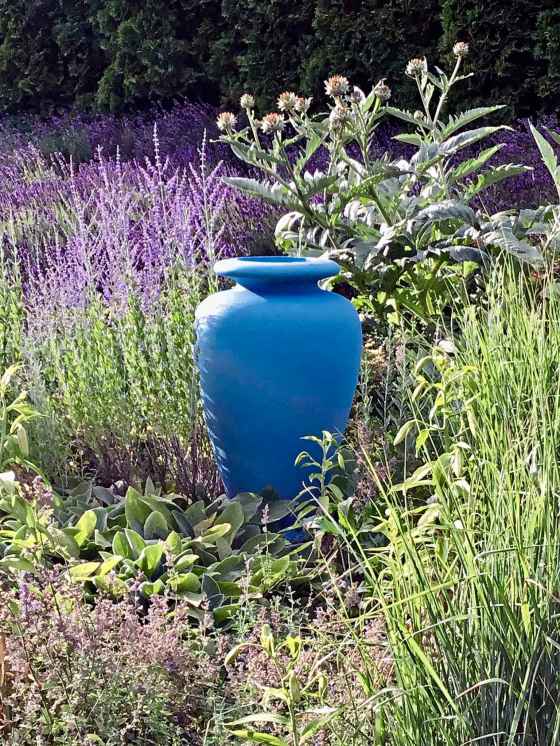
An empty container serves as a garden focal point. (Thomas Hobbs)
Tomato tips
Lenore Linton is a retired teacher who has grown tomatoes in her garden for many years. Recently she decided to simplify her method of fertilizing.
“I use a slow-release dry pelleted fertilizer called Acti-Sol, which is made from hen manure, bone meal and potash. It is recommended for tomatoes, and I also use it to fertilize peppers.
“Before planting the young plants, I run a soaker hose down one row and across and down the next row. This method prevents any damage or breakage to the young plants.
“I mix approximately one-half cup (60 grams) of fertilizer into the soil around each tomato plant at the time of planting and water each plant thoroughly. I also sprinkle additional fertilizer down the row.
“I now spread chopped garden straw down each row, making sure to cover the soaker hose and the soil around each plant. To make sure everything is working as planned, I turn on the soaker hose for an hour or so.
“Once the tomatoes produce blossoms and I notice the fruit set, I will reach beneath the straw and sprinkle another 60 grams of the Acti-Sol fertilizer beside each plant.”
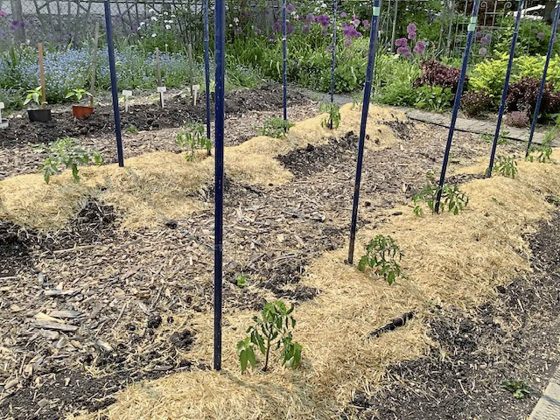
Tomato seedlings planted with a layer of mulch. (Lenore Linton)
One advantage of soaker hoses, says Linton, is that moisture goes directly to the root system without splashing on the foliage which can result in foliar diseases.
Linton says that the quality of the young tomato you plant influences the results of your harvest. Plants that become long and spindly outgrow their roots and lack nourishment, she says.
“One way to grow sturdy problem-free transplants is to follow this basic rule — keep plants in containers that are at least as deep as the plant is tall, especially during the first six weeks of growth.
“That is a rule I try to follow if the plant starts to outgrow its container. I transplant it into a deeper container and then plant it more deeply. Remember, tomatoes form roots on their stems in soil.”
Downy Mildew and Impatiens
Before the 2000s, Impatiens walleriana was at one time the world’s favourite bedding plant. It was possible to buy large flats of Impatiens walleriana in a broad range of colours. Heirloom varieties such as Impatiens walleriana Variegata could also be found at local garden centres.
In the 2000s, a fungus known as Plasmopara obducens (commonly known as Impatiens Downy Mildew or IDM) became widespread in landscapes in the U.K. and South Africa. At first, impatiens appeared to wilt and then became stunted and defoliated, almost overnight. The blooms withered and died.
By 2011, IDM began decimating impatiens plantings throughout the United States. That same year, it was discovered in Ontario.
In a very short time, Impatiens walleriana lost over 60 per cent of the market.
Breeders began working on developing disease-resistant varieties, and by 2020, a new, disease-free Impatiens walleriana — Beacon Impatiens — was launched globally.
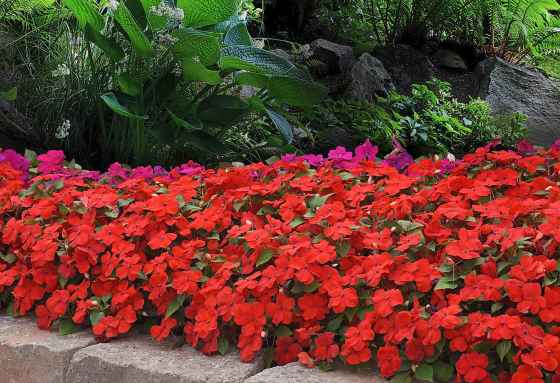
Impatiens Walleriana Beacon is highly resistant to downy mildew. (Ball Horticultural)
Another new variety, Bounce Impatiens, also debuted in recent years. Both varieties are highly resistant to impatiens downy mildew.
In addition, Beacon and Bounce impatiens offer larger flowers and better branching. They also cost more than the old varieties of Impatiens walleriana.
It’s still possible today to buy older varieties of Impatiens walleriana, such as Elfin, but the older varieties remain susceptible to downy mildew, which is spread by spores produced on the undersides of infected leaves. Water splash dislodges the spores and spreads the fungus to other impatiens plants nearby.
Once downy mildew infects Impatiens walleriana Elfin in your flower beds or containers, it is essential not to plant Elfin impatiens in the same spot again the following year.
Several readers wanted to know where they could buy Impatiens walleriana Variegata, which was featured in the May edition of Winnipeg Gardener. One reader was told by a local garden centre that they are reluctant to offer the traditional varieties of Impatiens walleriana now that disease-resistant varieties are available.
The older types of Impatiens walleriana will always have a place in the hearts of gardeners, however, newer varieties such as Beacon or Bounce are a much safer choice.
A versatile houseplant
Gwen Beam, a Brandon gardener and program director for the Brandon Garden Club, has grown Abutilon since 2015.
“I bought it at the Northwest Flower and Garden Show in Seattle,” says Beam. “I have shared so many cuttings over the last 10 years with friends.”
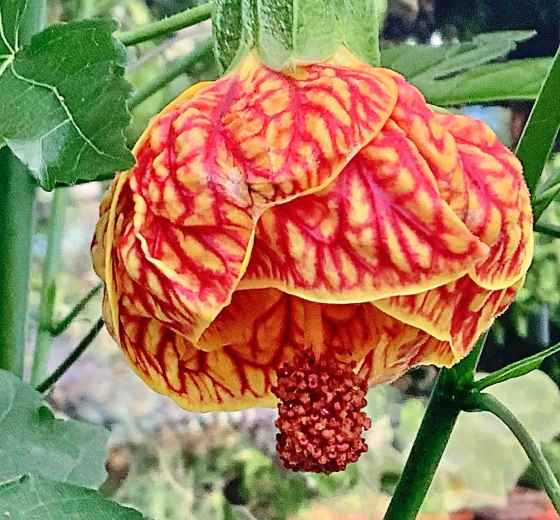
Flowering Maple (Gwen Beam)
Each year, Beam provides potted cuttings for the Brandon Garden Club’s annual plant sale in May. The plants are snapped up quickly.
Beam moves her Abutilon plant outside around the end of May and brings it indoors for the winter before the first frost in fall, usually by the end of September.
“Abutilon loves facing east,” she says. “I just love the exotic look of the flowers.”
Fast-growing, Abutilon is commonly known as flowering maple. It has generously sized maple-leaf-shaped foliage and showy, bell-shaped flowers with papery petals and distinctive veining. It attracts hummingbirds and flowers, says Beam.
Abutilon does show up from time to time at local garden centres. Let us know if you find it!
What is the problem with this plant?
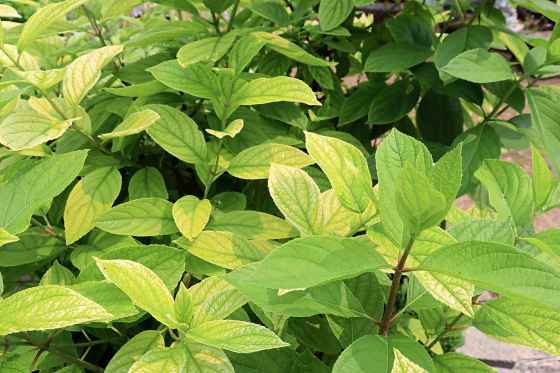
What is the problem with this plant? (Colleen Zacharias)
The plant in the photo is a hydrangea. At first glance, the yellowing leaves with dark green veins appear to be iron chlorosis, the bane of (almost) every hydrangea gardener at one time or another.
But before reaching automatically for iron chelate, Sheldon Gesell says that your shrub may have additional deficiencies that need to be addressed.
“Most times, when a gardener brings in a leaf that has yellowing on it, iron is recommended. The problem with that is that you are just putting on iron chelate to hopefully correct the issue.”
Gesell recommends Evolve Organic Iron Plus. “It contains 1% iron, 10% calcium, 10% sulphur and Rage Plus additive (freshwater kelp) that contains all other trace elements to cover your plant’s micronutrient needs.”
If your plant’s deficiency is misdiagnosed, this product covers all the bases, says Gesell.
First garden tour of 2025
The Urban Retreats Garden Tour celebrates its 26th season this year!
This popular annual garden tour is a major fundraiser for 1Just City, a non-profit charitable organization that supports three drop-in community centres in three Winnipeg neighbourhoods — West Broadway, the West End and Osborne Village. Last year’s tour raised a record amount of over $30,000.
On June 21, from 10 a.m. to 4 p.m., visit 14 gardens in the Deer Lodge area of St. James. Tickets for the tour are $20 and can be purchased on 1JustCity’s website and at local garden centres.
In conjunction with the tour, the Manitoba Tea, Craft and Plant Sale will also be held on June 21 at the Prairie Spirit United Church.

Peony show
Calling all peony lovers — the Prairie Peony Society invites you to attend the inaugural Lumsden Peony Festival on June 21.
Located 15 minutes north of Regina, the Town of Lumsden is nestled in the scenic Qu’Appelle Valley. The event will be held at the Rink and Rotunda, 3rd Avenue, Lumsden.
This inaugural show includes a peony exhibition that will showcase a wide range of peony varieties along with demonstrations, a floral arranging class, art displays, music, and more than 72 vendors. Admission to the show is free.
A featured highlight will be the opportunity to tour the spectacular peony garden owned by Myra and Gene Froc, which is home to more than 800 peony cultivars.
For more information, please visit the Facebook page for the Prairie Peony Society or contact Myra Froc, president of the Prairie Peony Society, at mfroc@sasktel.net.
|

